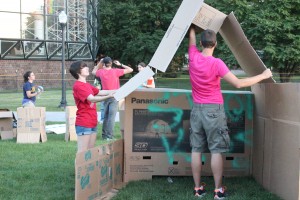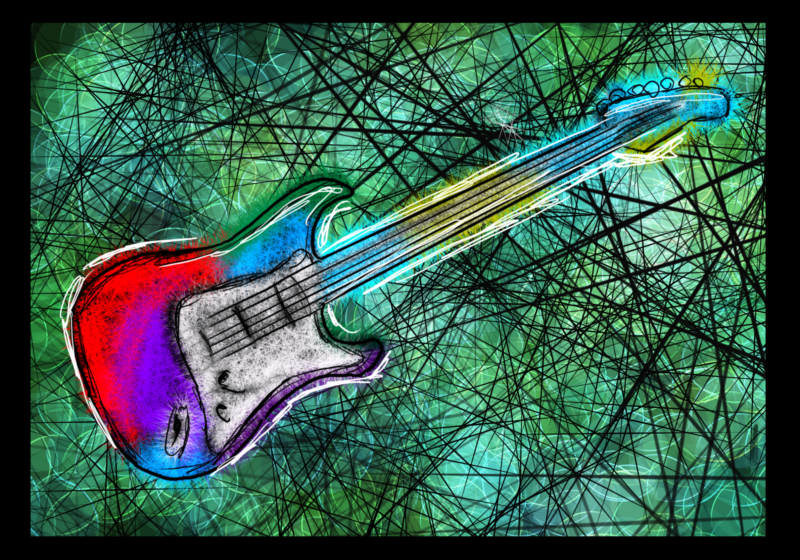Last Sunday, the new Margaret Warner Graduate School building wasn’t the only new architecture on the Wilson Quadrangle. Cardboard structures rose up from the ground outside Wilson Commons as nine groups took part in the first annual Shack-a-thon to raise awareness and money for Habitat for Humanity by buying cardboard boxes to sleep in overnight.
It was during that night that I had my first experience with being homeless.
At around 6 p.m., groups began assembling their living structures for the night — a task that definitely took more time and planning than crawling into a box to sleep. My friends and I planned our structure for the Campus Times, knowing full well that UR Habitat for Humanity and Delta Upsilon, the co-sponsors of the Shack-a-thon, provided luxuries — like scissors and duct tape — that those actually out on the street probably don’t come across.
We were lucky enough to have a good weather forecast on Sunday — in Rochester we’re accustomed to expect the worst, and a possible combination of rain and cardboard didn’t bode well for a homeless night. The ever-present threat of inclement weather was stuck in the back of my mind, as a perfectly warm and dry room waited for me in the Riverview apartments.
After several hours, interspersed with performances by the Midnight Ramblers and Mariachi Meliora, our shack was built — a little dilapidated, but architecturally sound nonetheless. Then came the waiting. Being homeless on the Quad severely limited Sunday night activity options. No electricity meant the inability to write out homework or check Facebook — two essential activities in student life. So we took the next best option: We tried to sleep.
But if anyone has tried to sleep on the Quad before, they know that the UR student body doesn’t truly fall asleep until about 3 a.m. Until that time, our box was constantly commented on — passersby thought it “precious” that we were homeless for the night, or wondered if we were suffocating under our plastic bag roof.
As the sun came up over Wilson Quad, we woke up with our cardboard home sagging yet still intact. Several teams weren’t so lucky, however, waking up with pieces of their house around them, as noted by SA President and senior Bradley Halpern, who slept under the stars outside of his igloo-like cardboard house.
“At around 2 a.m., people came climbing over me to get outside as our cardboard started collapsing due to the damp air,” Halpern said. “By the time I woke up at 6:30 a.m., everybody’s shacks had fallen.”
Although the cardboard was wet in the morning, Shack-a-thon spirits weren’t dampened. What started out as an idea from the New York State Habitat Conference became a reality that raised about $800 for Flower City Habitat — making the first ever Shack-a-thon “hugely successful,” according to UR Habitat for Humanity President and senior Emily Hart.
“It will definitely become annual,” UR Habitat for Humanity Vice President and junior Cathy Christian said, regarding the event in future years. “Even [students] who did not participate were really excited about the idea of it and were more than willing to donate to our cause.”
As I took one last look back at the heap of cardboard that constituted my home on Sunday night, the implications humbled me — approximately 38 percent of people nationwide, according to The 2010 Annual Homeless Assessment Report, endure living on the streets like that every night.
For those people, the cardboard holds significantly more value, as it takes the role of one of the basic human needs: shelter. While the hyperbole of living in a shack is often seen as a housing option for recent, jobless graduates, it is a reality for many brought to the forefront of UR’s consciousness by the Shack-a-thon.
Olfano is a member of the class of 2012.







